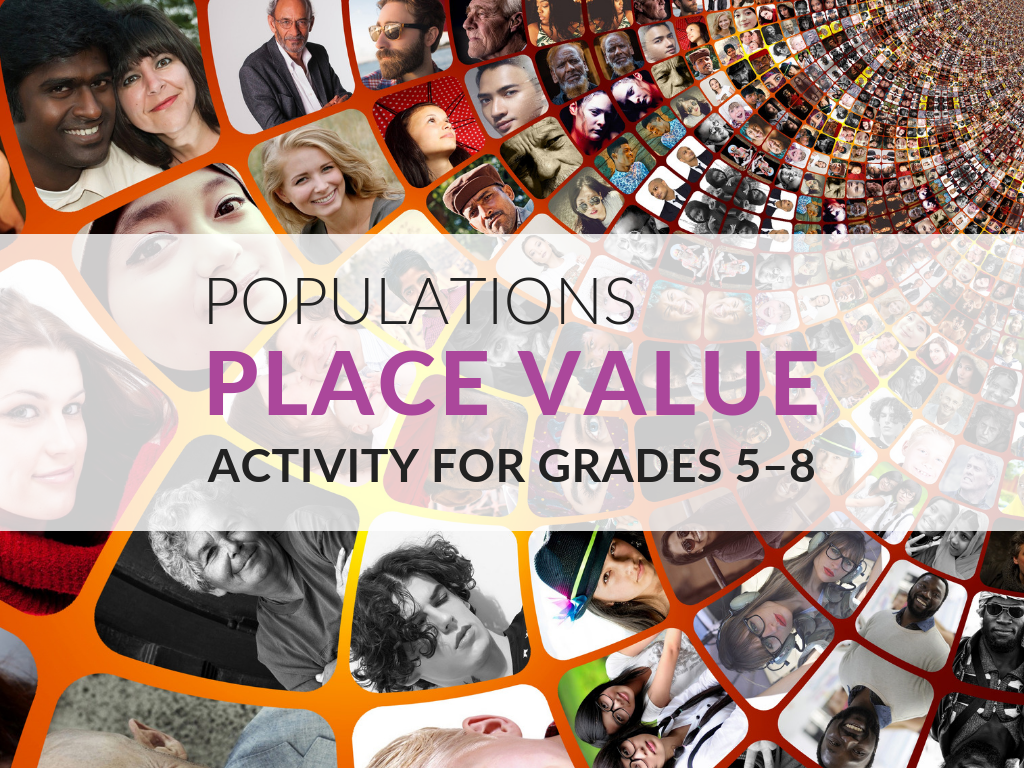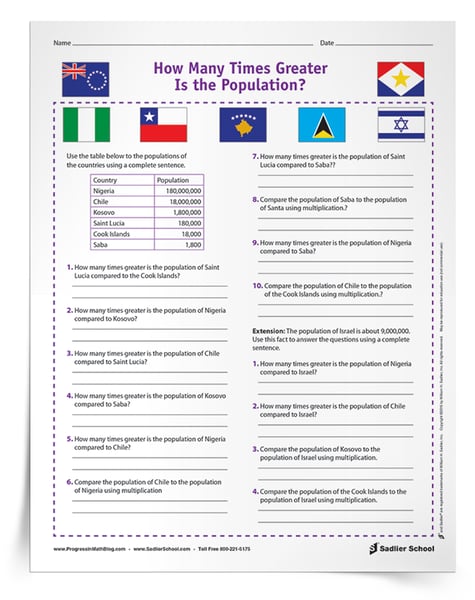March 27, 2019 3-5-number-and-operations-in-base-10, 6-8-expressions-and-equations
A Place Value Activity that Compares Populations, Grades 5–8
By: Jeff Todd
I don’t know about you, but sometimes my students have trouble telling how many times greater one thing is than another. They usually misread the problem and tell me how much bigger something is (by subtracting), rather than how many times greater. The Populations Place Value Activity uses the idea of place value to help students get used to the idea of telling the factor—or how many times greater—one country’s population is than another country's population. My printable place value activity is appropriate for Grades 5–8.
Populations Place Value Activity for Grades 5–8
Using Social Studies in Math Class
Starting in Grade 5, students should be able to recognize that a digit in one place represents 10 times as much as it does in the place to the right, and 1/10 of what it represents in the place to the left (5.NBT.1). By Grade 8, students should be able to compare numbers using scientific notation. The example with this Common Core State Standard is about comparing populations by telling how many times greater they are (8.EE.3). This activity on place value is design to help students with both of these standards.
If you have read some of my other blog posts, you might have noticed that I like to use social studies ideas in math class. Whether the topic is Islamic design, world health statistics, economics, or population, social studies has lots of numbers and facts to engage students and bring math to life! This place value activity uses the population of several countries carefully chosen from Wikipedia. They have populations that are multiples of tens times greater than each other. Take the time to point out where these countries are on the map and help students see the connection!
While you are using this activity, it is a good opportunity to build on the idea of reciprocals. For instance the population of Chile is 10 times greater than the population of Kosovo. That means that the population of Kosovo is 1/10 of the population of Chile. The population of Nigeria is 1000 times the population of Saint Lucia. That means the population of Saint Lucia is 1/1000 the population of Nigeria. This type of number sense may come very naturally to us as adults, but for students it needs to be explicitly taught, and the earlier the better.
For some students, this place value activity will be quite easy. I have included an extension for these students. Students who are ready for a challenge can consider the population of Israel, which cannot be compared by a factor of ten to the other countries. Students can reason using many different ways how to accomplish this task. I would let this be an open-ended task for them. Will they use a chain of reasoning with multiplication facts? Will they use long division? Will they use the idea of reciprocals?
In Summary
Helping students learn to compare two numbers using a factor will help them in the analysis of math problems and their daily lives. Using this real-life situation of population can help bring life to the place value lesson. In addition to place value, students can learn a little bit about the countries listed, and they can get a sense of how written numbers compare to each other. Download the PopulationsPlace Value Activity today and try it in your class!





